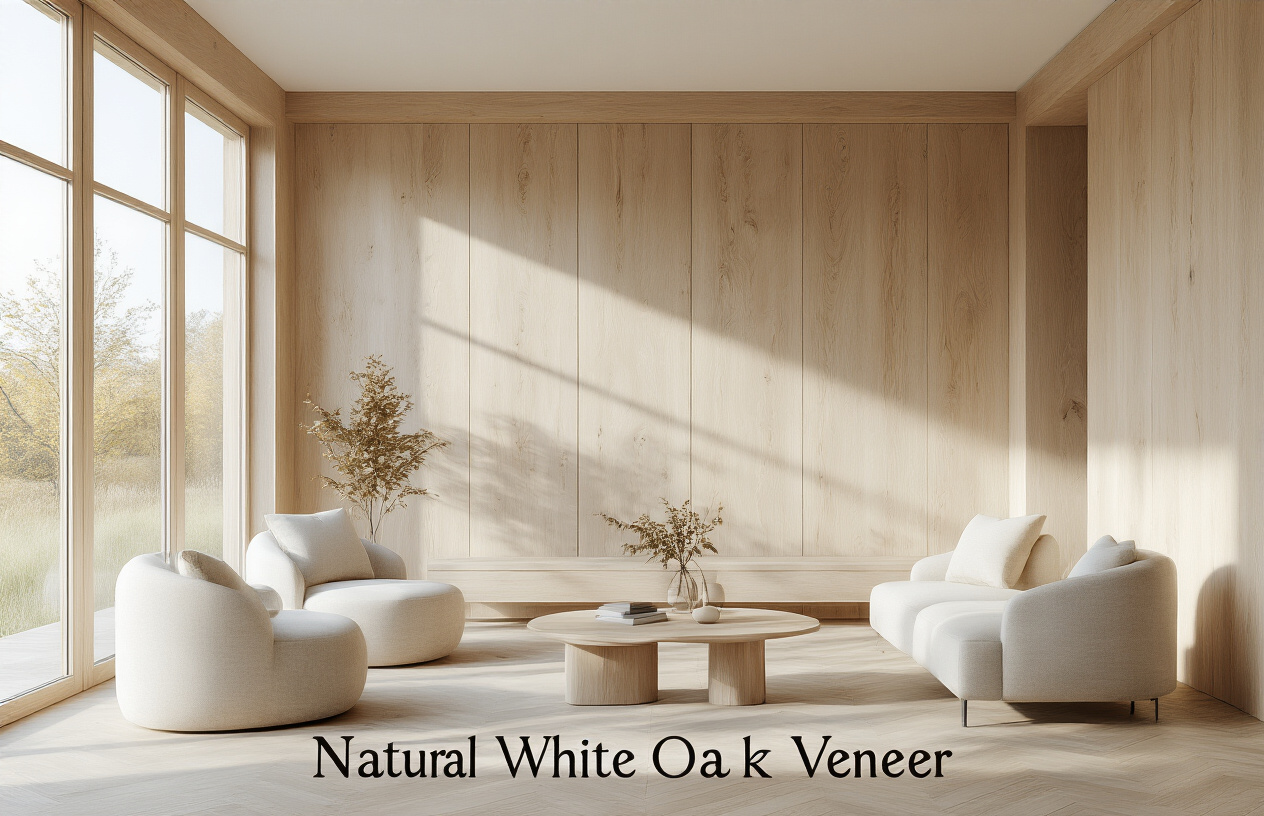Homeowners and designers love natural white oak veneer for its distinctive grain patterns and warm, neutral tones. This premium wood surfacing option brings elegance to any project while remaining surprisingly versatile. In this guide, we’ll explore what makes white oak veneer special and show you popular applications in modern interior design. We’ll also walk through how to select the highest quality veneer for your specific needs.
What Makes Natural White Oak Veneer Special
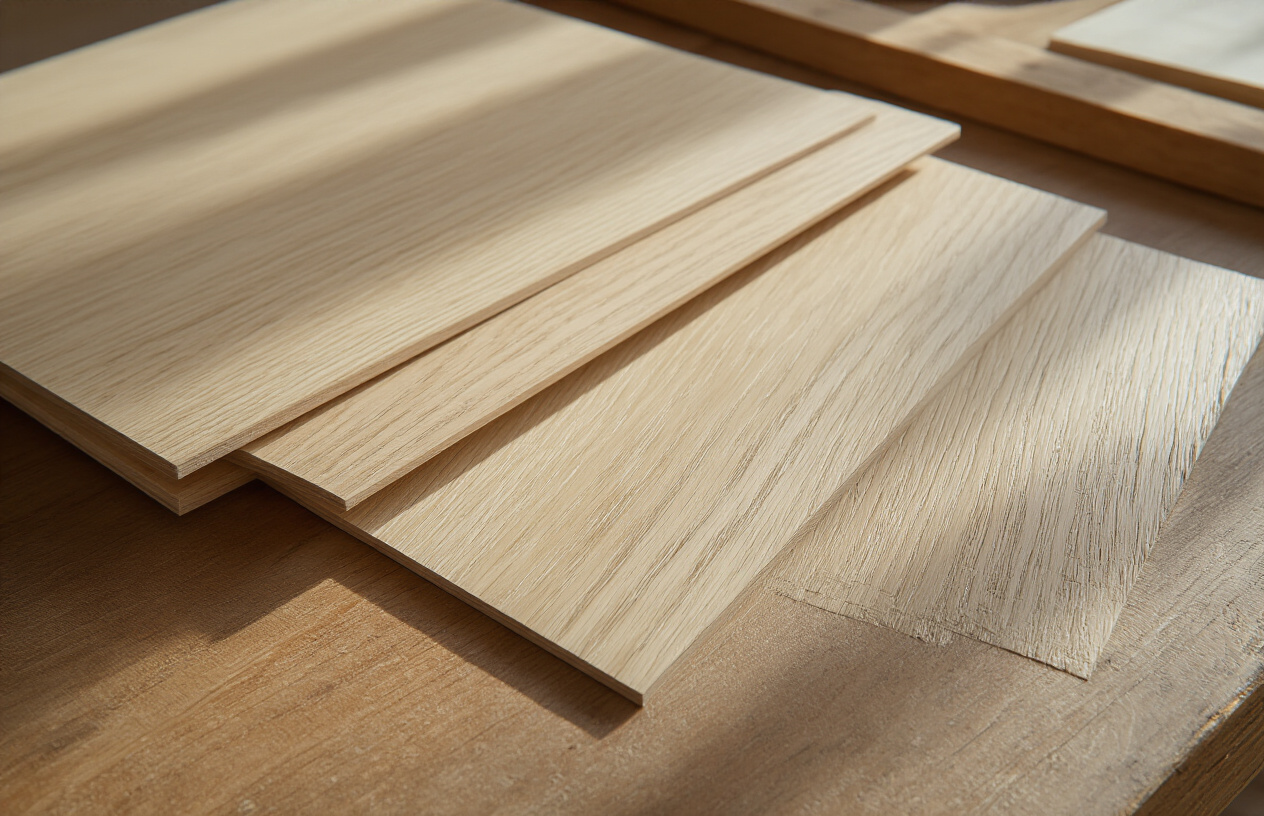
The distinctive grain patterns that enhance any design
Ever seen a piece of white oak veneer that stopped you in your tracks? That’s no accident. White oak’s grain is like a fingerprint—no two sheets are identical.
What makes white oak veneer truly special is its straight grain with those long, uninterrupted lines that draw your eye across a surface. But look closer and you’ll spot the flecks and medullary rays that catch light in ways other woods simply can’t match.
Designers go crazy for white oak because it’s incredibly versatile. Need something understated and clean for a modern space? White oak’s got you. Want character and depth for a traditional look? Same wood, different cut.
Superior durability compared to other wood veneers
White oak isn’t just another pretty face in the veneer world. This stuff is tough as nails.
Unlike softer veneers that dent if you look at them wrong, white oak has a natural resistance that stands up to daily abuse. The dense cell structure means it’s less prone to scratching, and it doesn’t lose its good looks over time.
Here’s how it stacks up:
| Veneer Type | Hardness | Scratch Resistance | Moisture Resistance |
|---|---|---|---|
| White Oak | High | Excellent | Superior |
| Cherry | Medium | Good | Moderate |
| Maple | High | Good | Moderate |
| Walnut | Medium | Fair | Good |
Timeless aesthetic appeal for luxury interiors
White oak veneer isn’t trendy—it’s timeless.
The warm, neutral tones work in virtually any space, from sleek penthouses to cozy mountain retreats. It’s the chameleon of the wood world, adapting to its surroundings while still maintaining its distinctive character.
High-end designers keep coming back to white oak decade after decade because it never looks dated. A white oak veneer installation from the 1960s can look just as fresh and relevant today as it did then—something you can’t say about most materials.
The subtle grain variations create visual interest without overwhelming a space, making it perfect for everything from statement walls to custom cabinetry.
Sustainable harvesting practices for eco-conscious consumers
Good news for your conscience: white oak veneer is one of the more sustainable options out there.
North American white oak forests are carefully managed with strict harvesting regulations. Since veneer production uses far less wood than solid lumber (we’re talking about thin slices here), you’re getting maximum visual impact with minimal environmental footprint.
Many suppliers now offer FSC-certified white oak veneer, ensuring the wood comes from responsibly managed forests. The certification tracks the wood from forest to final product, so you know exactly what you’re getting.
White oak trees are also relatively fast-growing compared to some exotic species, making them a renewable resource when properly managed.
Applications of White Oak Veneer in Interior Design
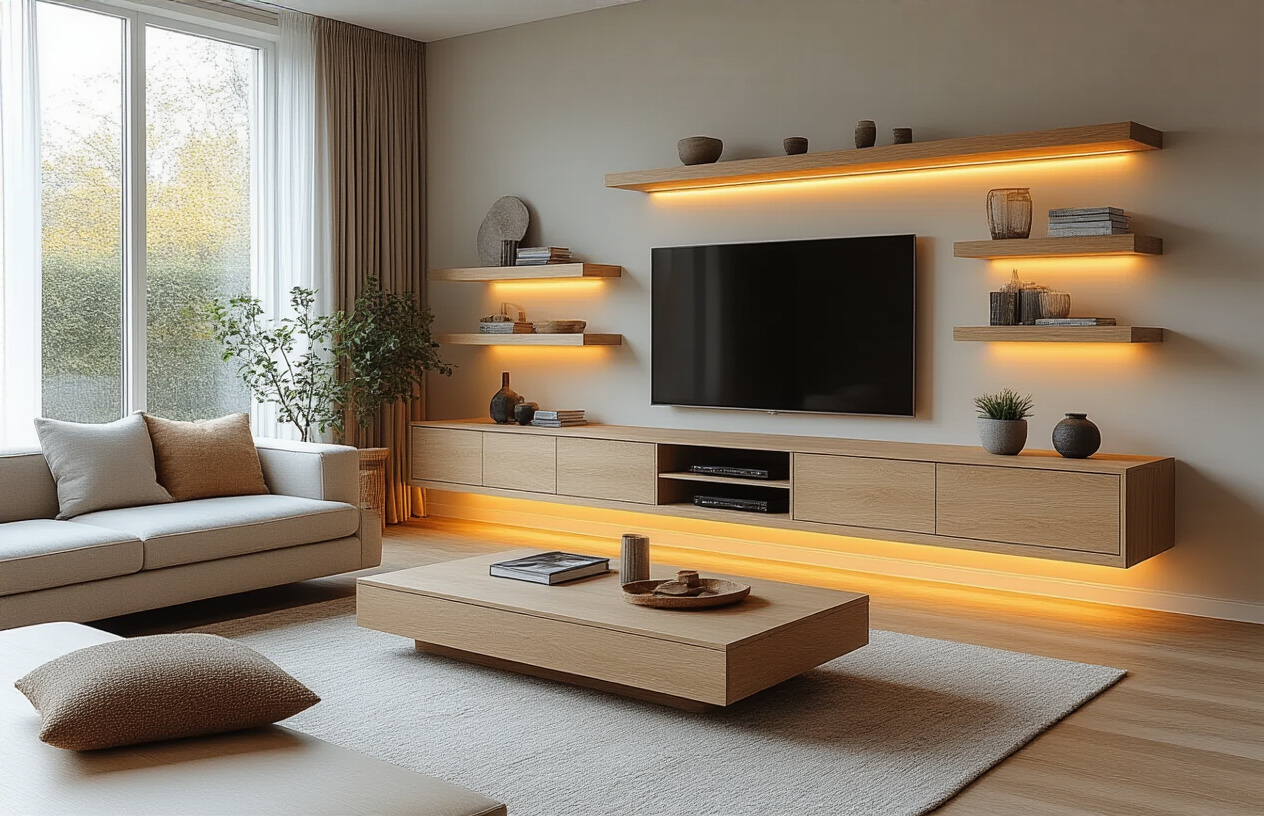
Contemporary kitchen cabinetry transformations
White oak veneer is revolutionizing kitchen designs across the country. The subtle grain patterns create a clean, sophisticated look that works in virtually any kitchen style.
Designers are pairing white oak cabinetry with contrasting dark hardware for a modern edge. The natural warmth of the wood softens the clinical feel that all-white kitchens can sometimes have.
Want the secret to making smaller kitchens feel larger? Light-colored white oak veneer reflects more light, creating an airy, open atmosphere without sacrificing style.
One of my clients swapped their dated cherry cabinets for white oak veneer and couldn’t believe the difference. “It’s like I gained an extra 100 square feet,” she told me.
Statement furniture pieces that wow guests
Nothing turns heads quite like a gorgeous white oak veneer dining table or credenza. The wood’s natural color variations create depth that mass-produced furniture simply can’t match.
White oak veneer works magic on mid-century modern pieces, offering that perfect balance between vintage charm and contemporary clean lines. A white oak coffee table becomes an instant conversation piece.
The beauty lies in the versatility—white oak plays well with metals, glass, and fabrics. Mix a white oak desk with brass accents for a look that’s both timeless and on-trend.
Wall paneling that adds warmth and texture
White oak veneer wall panels transform ordinary walls into architectural features. The vertical grain creates an illusion of height, making even standard-height rooms feel more expansive.
I’m seeing white oak veneer accent walls behind beds, in entryways, and even in bathrooms where they bring warmth to typically cold spaces.
The trick is in the installation pattern. Herringbone arrangements add sophistication, while straight planks create a more casual, contemporary feel.
Doors and architectural elements that elevate spaces
White oak veneer doors aren’t just functional—they’re statement pieces. The continuous grain patterns flowing from top to bottom create visual interest that plain doors simply lack.
Architects are using white oak veneer for ceiling beams, column wraps, and built-in shelving to create cohesive design stories throughout homes.
The material works brilliantly for room dividers and sliding doors, allowing spaces to feel connected while maintaining distinct functions.
Commercial applications for lasting impressions
Restaurants and boutique hotels are embracing white oak veneer to create memorable, Instagram-worthy spaces. The material photographs beautifully and creates that coveted warm, natural ambiance.
Corporate offices use white oak veneer wall systems and reception desks to convey stability and sophistication without feeling stuffy or dated.
The material’s durability makes it perfect for high-traffic commercial environments. With proper sealing, white oak veneer maintains its beauty for years despite constant use.
Retail spaces leverage white oak’s natural beauty to create display backgrounds that enhance products without competing for attention.
Selection Guide: Finding Premium White Oak Veneer
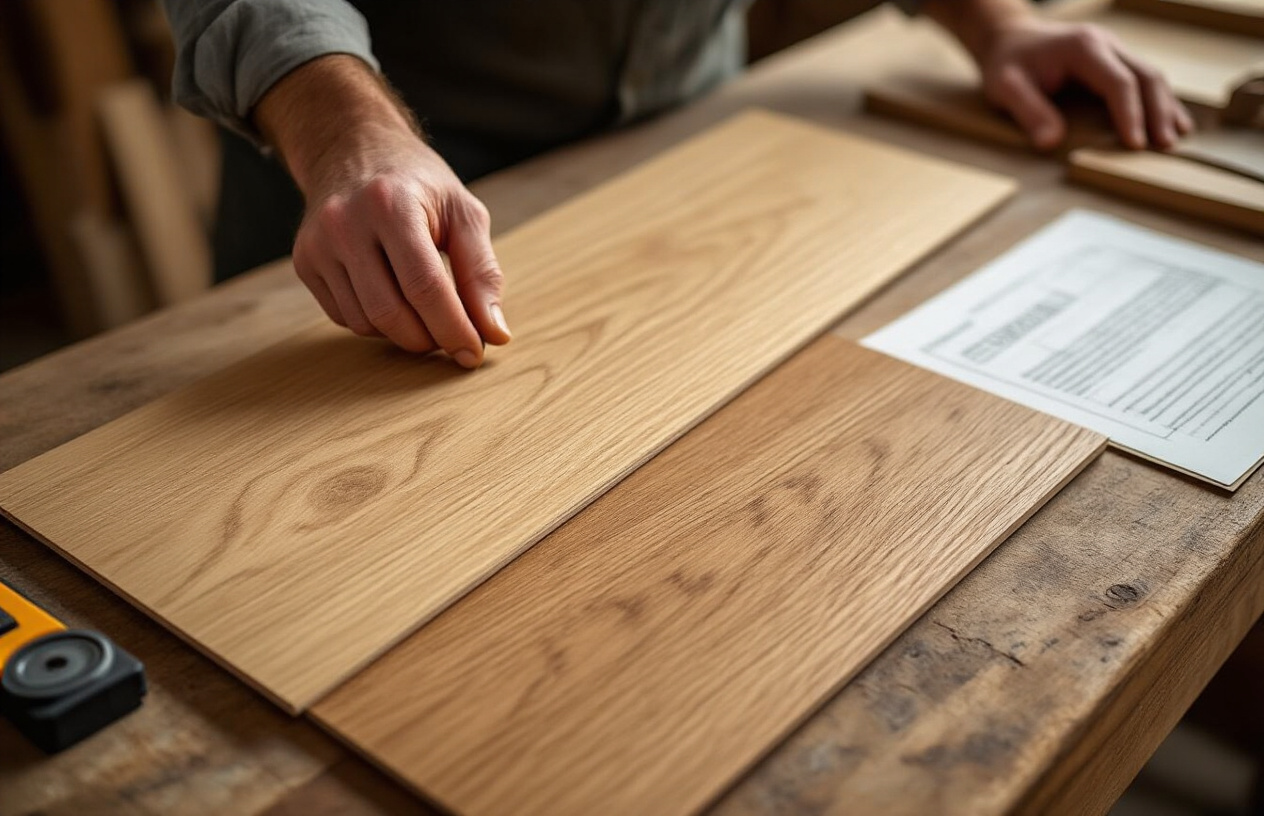
Understanding veneer grades and quality markers
Shopping for white oak veneer can feel overwhelming with all the terminology thrown around.
Veneer grades aren’t just fancy labels – they directly impact what you’re getting. The cream of the crop is “AA” grade – this stuff has minimal color variation, uniform grain, and virtually no defects. Step down to “A” grade and you’ll see slight color variations but still great quality. “B” grade? More color variation and some small knots.
Most premium suppliers use the European system (A, B, C) or the American system (AA, A, B, etc.). But here’s the thing – these aren’t standardized across the industry. One supplier’s “A” might be another’s “AA.”
What really matters? Look for:
- Consistent thickness throughout the sheet
- Minimal sapwood (the lighter outer part of the tree)
- Clean cuts without tear-out or fuzz
- No delamination or bubbling on backing
- Natural color without artificial staining
How to identify authentic white oak characteristics
White oak veneer has a signature look that’s hard to fake.
The real deal has a distinctive light tan to pale brown color with a slight pinkish tinge. The grain? Straight with those beautiful “flecks” or “rays” when quarter-sawn.
Run your fingers across it – authentic white oak feels slightly coarse but even. The smell is subtle but distinctive – a mild, pleasant woody scent without chemical undertones.
Another giveaway is the medullary rays – those gorgeous flakes that appear as ribbons running perpendicular to the grain. These are white oak’s calling card and nearly impossible to replicate in fake veneers.
Thickness options for different applications
Veneer thickness isn’t one-size-fits-all. Pick the wrong thickness and you’re asking for trouble.
Standard thickness options:
- 0.5mm (1/50″): The industry standard for most furniture and cabinets
- 0.6mm (1/42″): Slightly thicker for more durability
- 0.8mm (1/32″): Premium option for high-wear situations
- 1.0mm (1/25″): Specialty applications where sanding may be needed
For curved surfaces, thinner veneers (0.5mm) bend more easily without cracking. Working on a tabletop that’ll see heavy use? Go thicker (0.8mm) to allow for future refinishing.
The truth is that most commercial applications use 0.5mm veneer because it hits the sweet spot between flexibility, material usage, and durability.
Backing material considerations for various projects
The backing material can make or break your veneer project. Seriously.
Paper-backed veneer works great for flat surfaces and DIY projects. It’s flexible and easy to work with using contact cement. But it’s not ideal for complex curves.
Phenolic-backed veneer offers significantly more strength and moisture resistance. Perfect for kitchens, bathrooms, and commercial settings where humidity fluctuates.
Wood-backed veneer (typically with a thin substrate of poplar or similar wood) provides the most stability but less flexibility. This is your go-to for high-end furniture where the substrate needs to be invisible.
For sustainable projects, look for FSC-certified backings. And if you’re using contact adhesives, ensure your backing is compatible – not all are.
Remember that some backings can show through with lighter veneers like white oak. Test in an inconspicuous area first or ask your supplier for samples.
Installation and Finishing Techniques
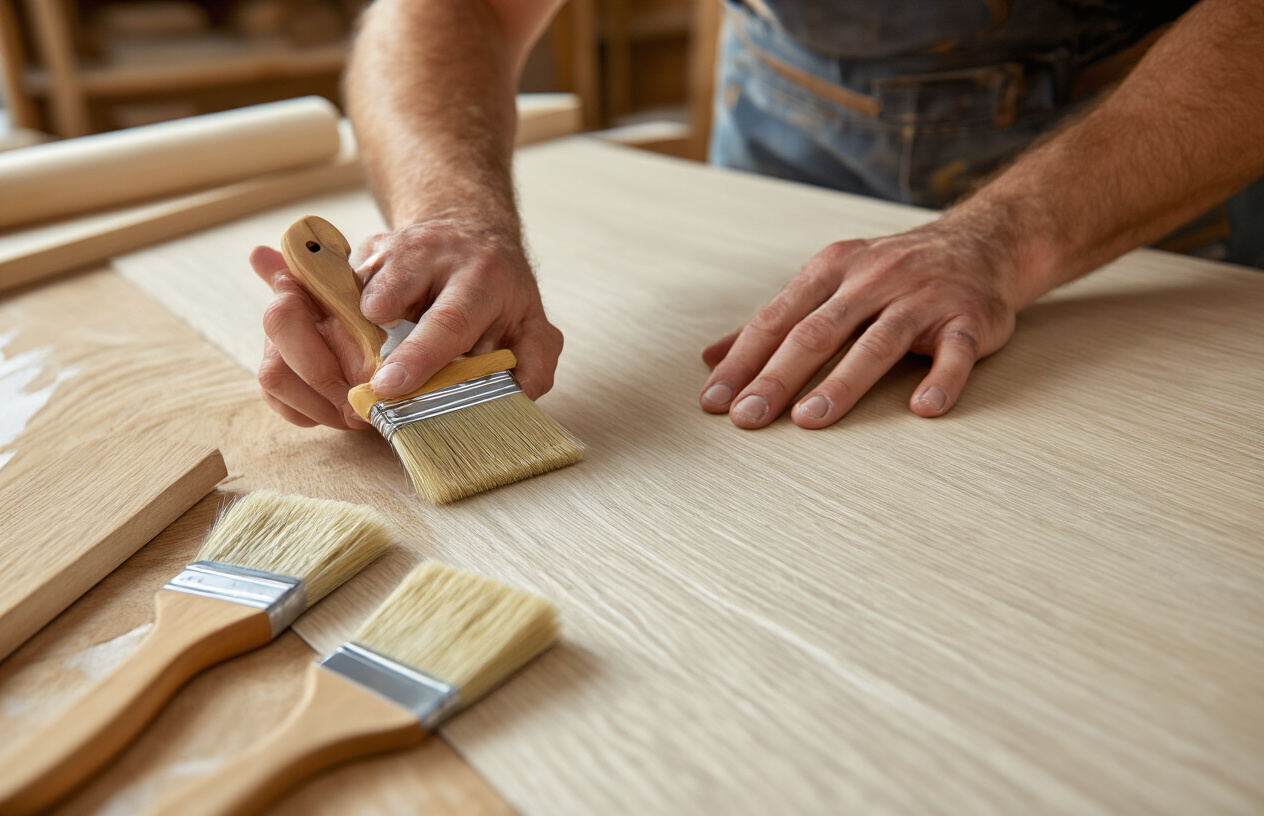
Professional application methods for flawless results
Getting that perfect white oak veneer finish isn’t rocket science, but it does require attention to detail. Professional installers typically use vacuum presses to ensure bubble-free adhesion. The key? Proper substrate preparation. Sand it smooth, clean thoroughly, and you’re halfway there.
Pros also swear by contact cement for edge banding applications, applying it to both surfaces before pressing. The secret weapon? J-rollers. They eliminate air pockets and ensure complete bonding without damaging the delicate veneer surface.
Temperature matters too. Keep your workspace between 65-75°F with moderate humidity for optimal results. Rush this step, and you’ll regret it later.
DIY-friendly approaches for smaller projects
Not ready to invest in professional equipment? No problem. For smaller projects, iron-on veneer tape works wonders for edge banding. Just position, press with a household iron on medium heat, and trim the excess.
For flat surfaces, heavy books make surprisingly effective weights. Apply wood glue evenly, position your veneer, cover with wax paper, and stack those hardcovers. Leave overnight and you’ll get decent results.
Pre-glued veneers are another DIY lifesaver. They activate with heat from an iron and require minimal specialized tools. Perfect for beginners tackling cabinet doors or small tabletops.
Staining options to complement various design schemes
White oak veneer takes stain beautifully, but test first! Its natural color ranges from light tan to pale yellow, providing a versatile base for various finishes.
Water-based stains offer environmental benefits and quick drying times. They highlight white oak’s grain without excessive darkening. Oil-based alternatives provide deeper penetration and richer tones, though they require longer drying periods.
For contemporary spaces, try:
- Gray washes that create modern, weathered looks
- White pickling for Scandinavian-inspired brightness
- Clear finishes that let the natural character shine
Traditional settings benefit from amber or honey tones that develop warmth over time.
Protective finishes that preserve natural beauty
Polyurethane remains the go-to for high-traffic surfaces. Water-based versions offer excellent durability with minimal yellowing. Apply 3-4 thin coats rather than one thick layer for best results.
For furniture pieces, Danish oil creates a hand-rubbed finish that’s easy to repair. It penetrates the wood rather than sitting on top, enhancing grain while providing moderate protection.
Wax finishes create a soft luster that’s touchably smooth, though they require more maintenance. They’re ideal for decorative items that won’t face heavy use.
Whatever you choose, remember this: thin, multiple coats always outperform single thick applications.
Maintenance tips for lasting performance
White oak veneer is surprisingly tough, but it’s not invincible. Avoid direct sunlight exposure which can fade and dry out the wood over time. Use blinds or UV-filtering window films in bright rooms.
Clean spills immediately with a barely damp cloth—never saturate the surface. For routine dusting, use a microfiber cloth or lambswool duster moving with the grain.
Reapply your protective finish before severe wear appears. For polyurethane, a light scuff with fine sandpaper (320 grit) between maintenance coats ensures proper adhesion.
Humidity fluctuations are veneer’s worst enemy. Maintain indoor humidity between 40-60% year-round using humidifiers or dehumidifiers as needed.
Cost Considerations and Value Proposition
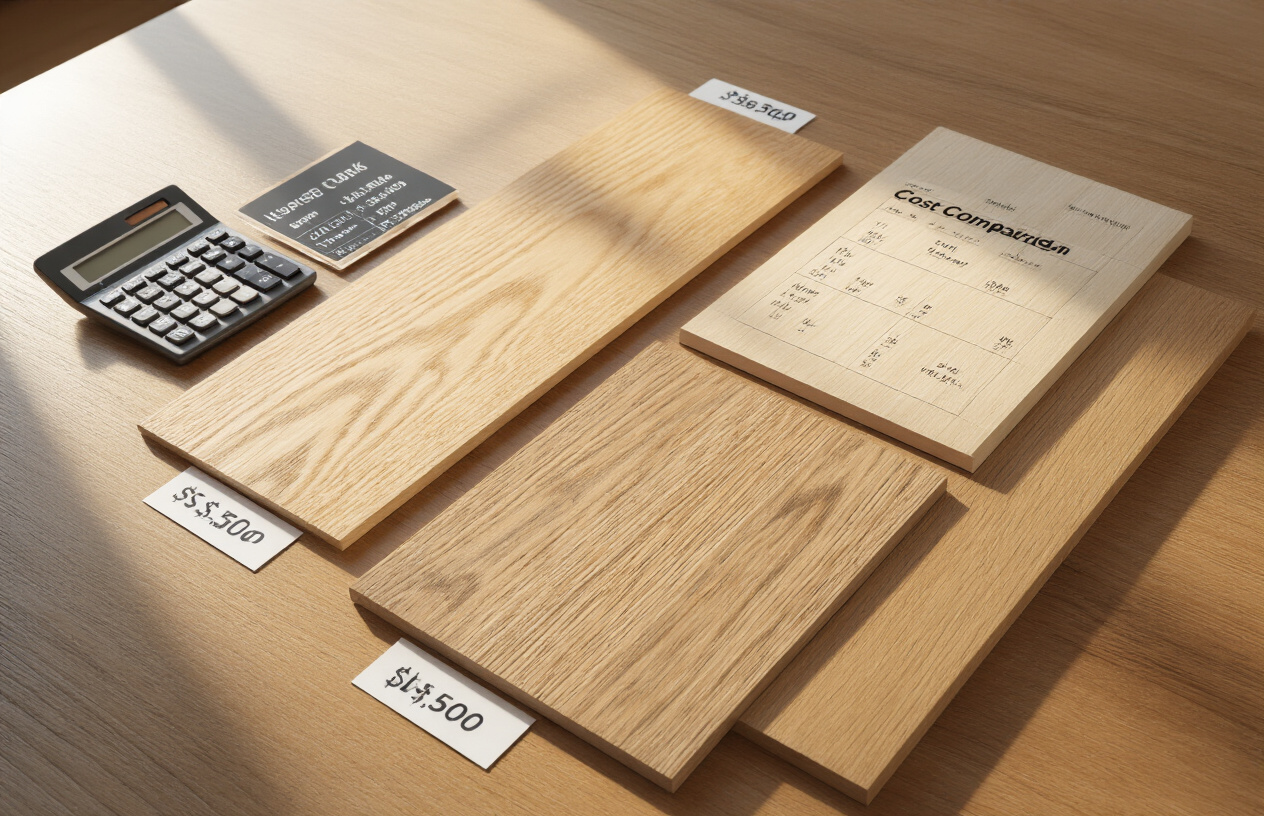
A. Investment comparison with solid wood alternatives
Ever wondered why white oak veneer costs so much less than solid oak? The math is pretty simple.
A solid white oak dining table might set you back $2,000-$4,000, while a similar veneer piece runs $800-$1,500. That’s potentially 60% savings right there.
Here’s a quick breakdown:
| Feature | Solid White Oak | White Oak Veneer |
|---|---|---|
| Cost per sq ft | $15-25 | $3-8 |
| Weight | Heavy (shipping $$) | Lightweight |
| Installation | Requires skilled labor | DIY-friendly |
| Maintenance | High | Moderate |
The pricing gap makes sense when you consider that veneer uses just a thin slice of premium wood rather than massive chunks of lumber. You’re getting the same beautiful grain without paying for all that unused wood underneath.
B. Long-term benefits that justify the initial expense
White oak veneer isn’t just cheaper upfront—it keeps saving you money year after year.
First off, these veneers last. We’re talking decades of beautiful performance when properly maintained. The factory finishes applied to quality veneers are typically more durable than anything you’d apply to raw wood at home.
Stability is another major win. While solid wood expands, contracts, warps and cracks with humidity changes, veneer stays put. That means no costly repairs or replacements down the road.
The environmental angle can’t be ignored either. From a single log, manufacturers can produce about 30 times more veneer surface area than solid lumber. Your purchase stretches precious hardwood resources much further.
C. Where to source quality white oak veneer at competitive prices
Finding good white oak veneer doesn’t have to break the bank if you know where to look.
Specialty woodworking suppliers like Certainly Wood and B&B Rare Woods consistently offer premium-grade white oak veneer sheets at fair prices. Their selection tends to include figured options like quarter-sawn patterns that really showcase what makes white oak special.
For DIY projects, check out Rockler or Woodcraft—both carry ready-to-use veneer sheets with PSA (peel-and-stick) backing that makes application dramatically easier.
Want the absolute best deal? Buy in bulk from wholesale distributors like Oakwood Veneer Company. Their minimum orders are higher, but the per-square-foot price drops significantly.
Online marketplaces sometimes offer surprising deals too. Etsy artisans selling excess inventory from their own projects often price competitively since they’re not carrying the overhead of a dedicated retailer.
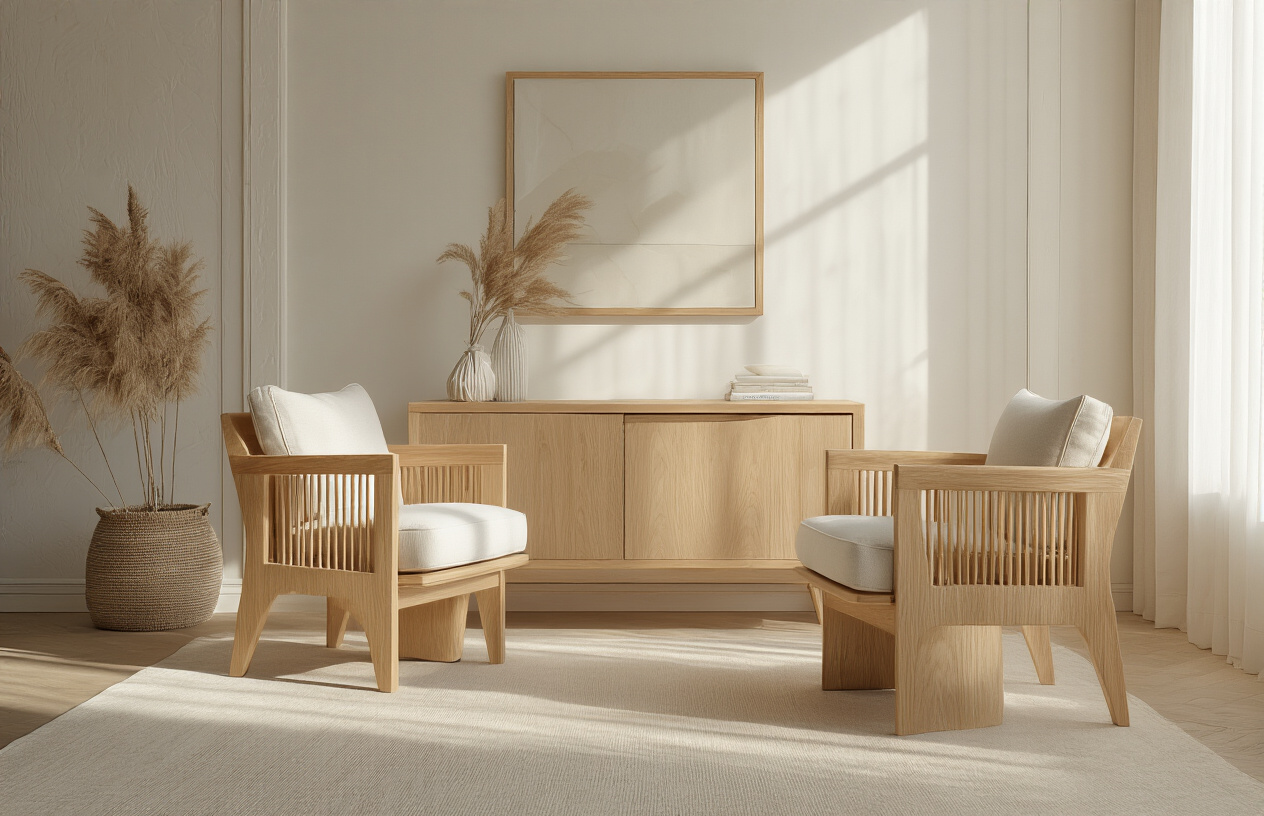
Natural white oak veneer stands as a timeless material that brings warmth, elegance, and durability to any interior design project. From its distinctive grain patterns and exceptional versatility to its remarkable sustainability credentials, white oak veneer continues to be a preferred choice among designers and homeowners alike. Whether used in cabinetry, furniture, wall paneling, or architectural elements, this material elevates spaces with its natural beauty while offering practical benefits that justify its investment.
As you embark on your next design project, consider the enduring appeal of natural white oak veneer. By selecting premium quality sheets, working with experienced craftspeople, and applying proper finishing techniques, you can create stunning environments that will be appreciated for generations. The initial investment in quality white oak veneer pays dividends through longevity, timeless appeal, and the unmatched character that only natural wood can provide.
